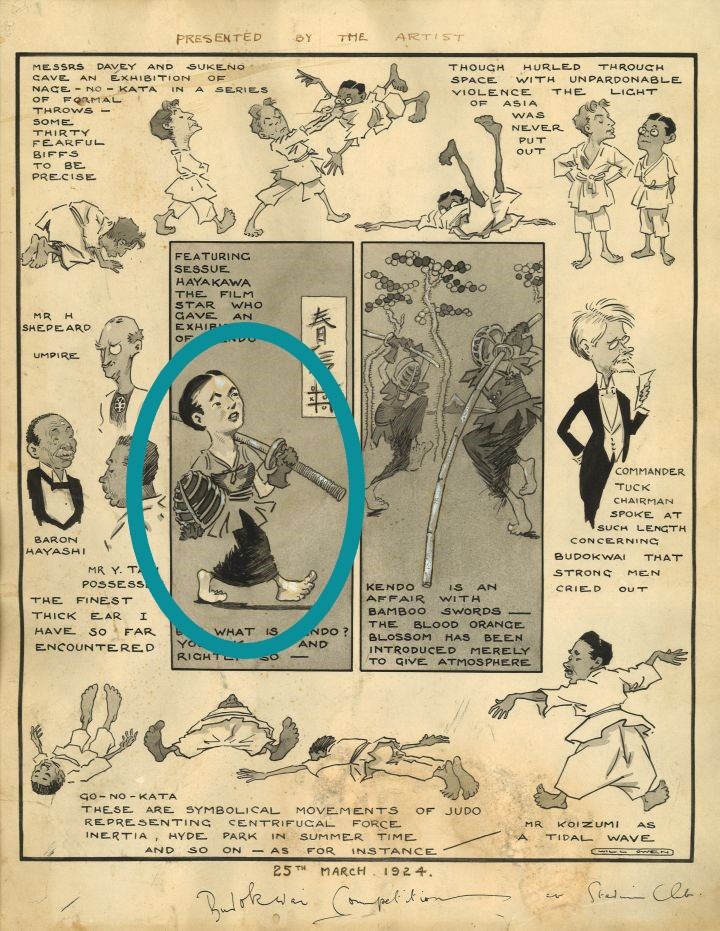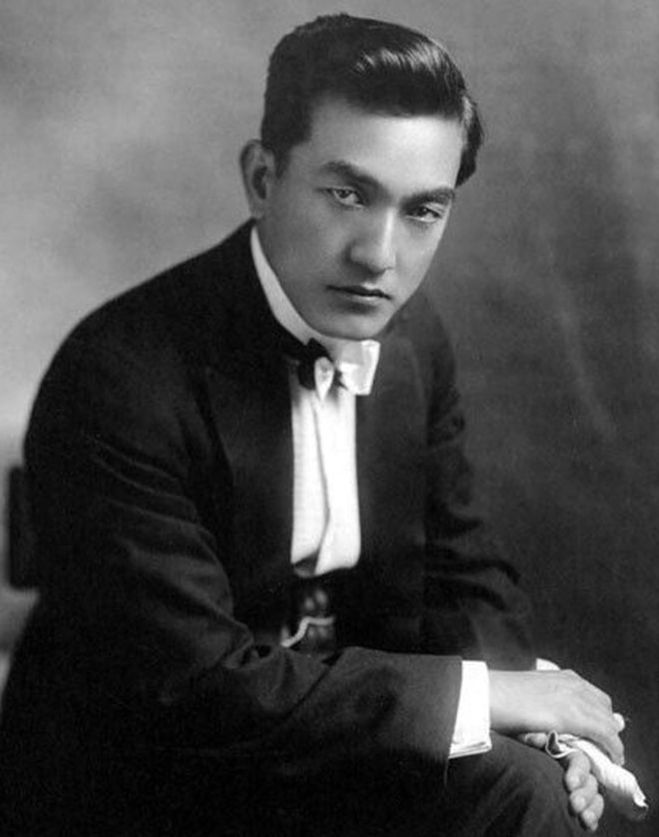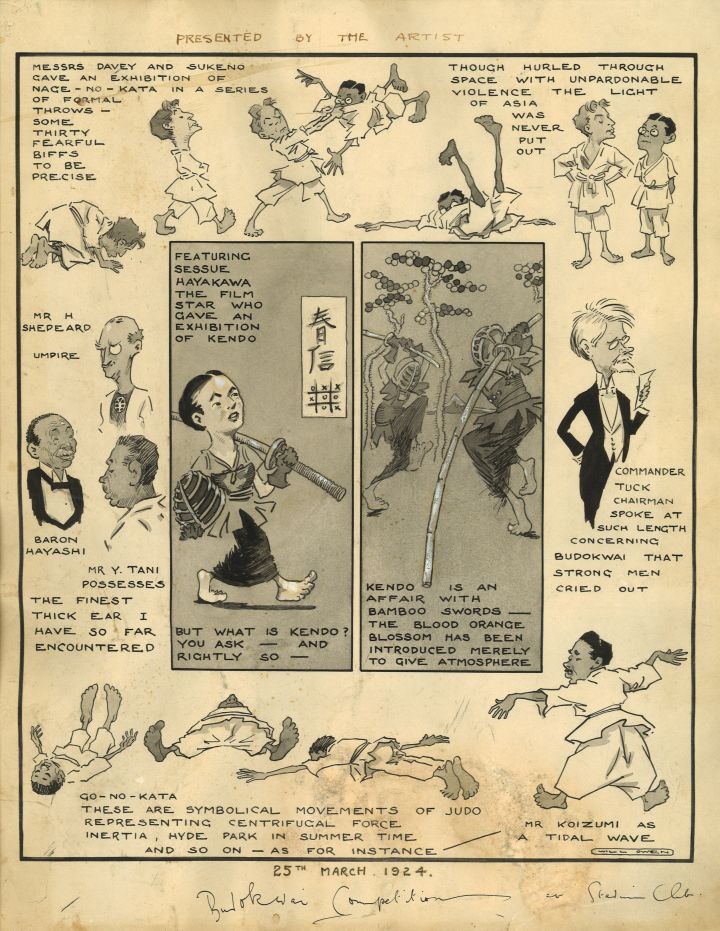Paul Budden finds a Hollywood matinée idol at a martial arts display in London.
The subject of my book Japanese Ways of Chivalry - A Study of Budokwai Displays in the Early 1900s, focuses on the traditional Japanese sport of kendo and the people involved. During my recent visit to Bath University Library, I was both surprised and delighted to be shown a drawing by the artist Will Owen (1869-1957) from the 1924 annual Budokwai display featuring Hayakawa Sesshu, who had given an impromptu kendo demonstration at the event held on the 25th March at the Stadium Club, High Holborn, London.

Kintarō Hayakawa (早川 金太郎), professionally known as Sessue Hayakawa, was a Japanese actor and matinée idol during the silent film era of the 1910s and early 1920s. He was the first actor of Asian descent to achieve stardom as a leading man in America and Europe and one of the most popular stars in Hollywood. His ‘simmering’ good looks and typecasting as a brooding villain or forbidden lover turned him into a heartthrob during a time of racial discrimination. His fame rivalled that of Douglas Fairbanks, Charlie Chaplin and John Barrymore. In 1917, he built a castle-style mansion in Hollywood and was reported to have driven a gold-plated car. He entertained lavishly and was renowned for some of Hollywood's wildest parties. His later roles as Kuala, the pirate captain in Swiss Family Robinson (1960) and Colonel Saito in The Bridge on the River Kwai (1957) are probably those for which he is best-remembered.

Throughout his career Hayakawa’s opportunities were limited by typecasting and racial stereotyping. He encountered anti-Japanese sentiment coming from various segments of American society, partly as a result of nationalism arising from World War I and World War II. His early films were not popular in Japan either because many felt that his roles portrayed Japanese men as cruel and sadistic. Although the roles made him popular in the U.S., many Japanese viewers found them insulting. Some even believed that Hayakawa contributed to increased anti-Japanese feeling in the U.S., regarding him as a traitor to the Japanese people. However, after Hayakawa became established as an American superstar, the Japanese press came to regard him more favourably, publicising his cinematic achievements instead.
Hayakawa’s kendo ability was not commonly known, it was something that I had discovered on reading Budokwai history a few years ago, so it was really nice to see the poster from the Bowen Collection for the first time. He was however known for his athlete’s physique, agility, discipline and martial arts skills, being proficient in jujutsu (judo).
After retiring from film in 1966, Hayakawa dedicated himself to Zen Buddhism, becoming an ordained Zen master and working as a private acting coach.
Further resources
Sessue Hayakawa: Silent Cinema and Transnational Stardom, by D. Miyao (2007).
The Oshu Kendo Renmei: A History of British and European Kendo (1885-1974), Paul Budden (2017).
